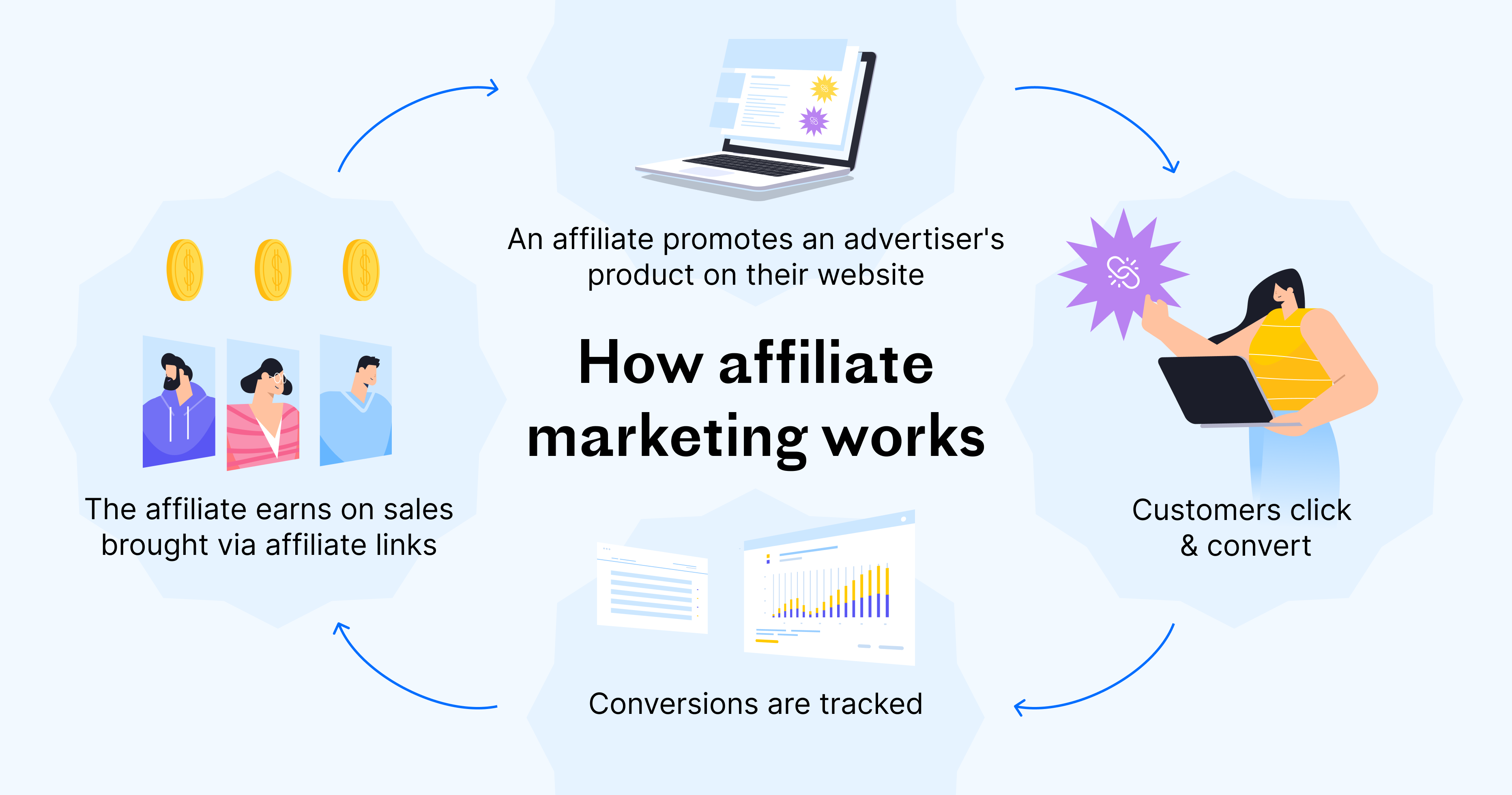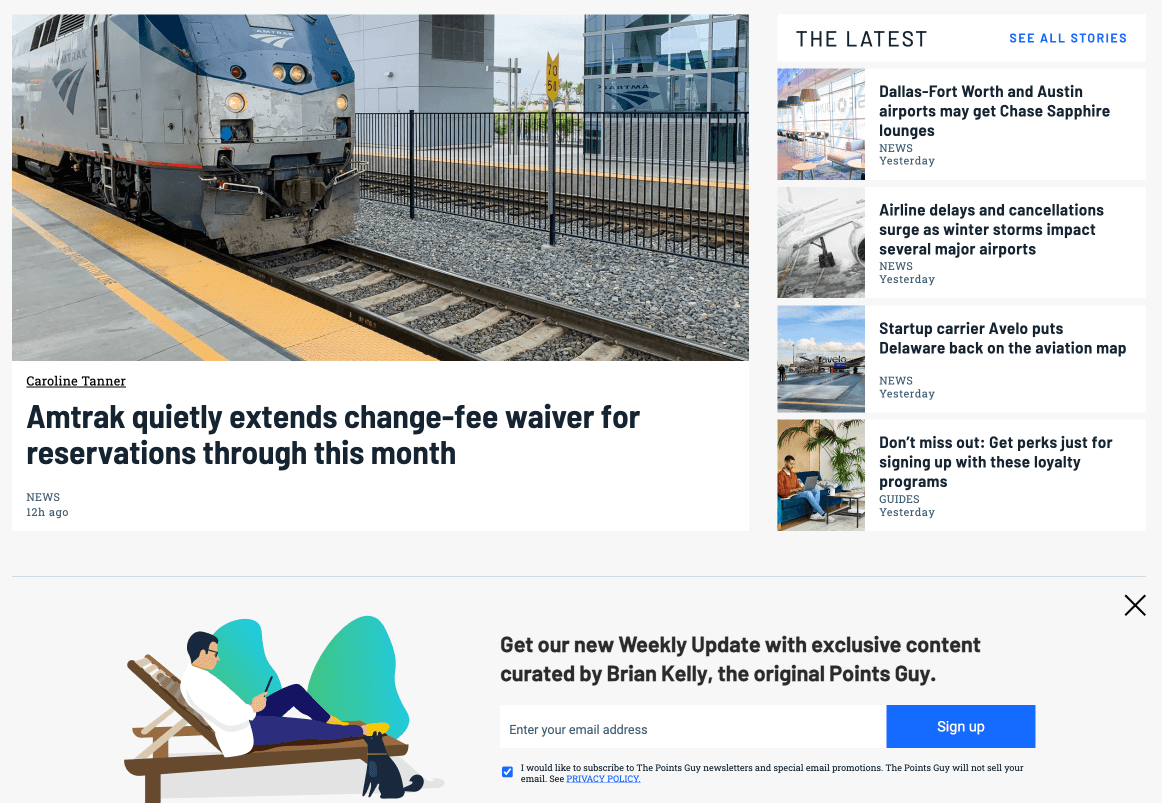Does it seem realistic to you for a travel blogger to earn $50,000 to $60,000 a month? If not, we recommend reading a firsthand story from a blogger who earns exactly that amount.
While $50,000 to $60,000 a month is not the limit, according to research conducted by Authority Hacker, most affiliates earn around that much or lower. However, it is quite possible to reach an income of $1,000 to $2,000 per month without needing to work on a blog for many years. Another story from the Adventour Begins blog confirms that you can earn a solid income in a short timespan.
You can find more inspiring examples on the average affiliate marketing income page.
Nevertheless, there are people who believe that it is impossible to make money on a travel blog. Examples are indeed being shared on the Internet, but such cases are often related to blogs that receive no traffic. If you are able to create content that attracts traffic, then you will surely earn money, as advertisers will be willing to pay to promote their brand to your audience.
The higher the quality of your audience and the larger the total size of your audience, the more money you can earn on your travel blog. Most travel bloggers with US traffic earn around $25 to $30 per 1,000 CPM (ad impressions). Traffic from other countries usually brings in fewer earnings, but there are exceptions as well. As a result, both a blog with traffic from the US and a blog with traffic from other countries (and in other languages as well) can be profitable.
The Costs of Starting a Travel Blog
When it comes to making a profit, it is important to always keep expenses in mind. For example, earning $10,000 by spending $12,000 means losing $2,000. Fortunately, in the case of travel blogs, this is not the case. Before we take a closer look at profits, let’s explore the costs related to creating a travel blog.
To start a blog on your own domain requires $0, but a basic set up will still require some investments on your end:
- Domain Name – $10-20 per year
- Hosting – $50-100 per year
- Design – Free or $50-80
- Content Management System – Free (like WordPress)
As a result, it will cost you about $100 to $300 to start your blog. If you need help setting up WordPress, you can certainly find a contractor on Fiverr or UpWork for $10 to $15 an hour, who will probably finish setting up your main website within 10 hours.
To make your blogging journey easier, start with this free step-by-step guide on how to become a travel blogger.
Creating the site itself is just the beginning of your journey. After creating your blog, you will need to fill it with content. You don’t need to be a journalist to create content nor do you need to involve SEO specialists. You can, on your own, produce high-quality content that will then rank well. All you need to do is arm yourself with knowledge from specialized courses:
- Best of SEO: #1 SEO Training & Content Marketing Course 2023
- Content Writing & Copywriting For SEO and Sales
- SEO Course
- Blogging – Blog Copywriting
- Copywriting For Beginners
If you still want to hire authors, then you should expect to pay roughly $0.10 per word. You can calculate the total expense based on the volume of future articles. However, many bloggers create their own content and you probably can as well.
Your travel blog will also need pictures. To get them, you can find free photos from your old travels or from free photo stocks, such as Unsplash or Pixabay.
The most valuable asset, when it comes to creating your own travel blog, is time. To develop a good blog that attracts enough traffic to allow you to earn four to five figures per month, you will need to create content, which takes time.
How much time it will take you depends on your skills. However, you can roughly calculate the amount of time you will need by estimating the time you spent writing your first few articles and multiplying that amount of time by the number of articles you plan to create in order to reach your desired traffic volume. Keep in mind that, in the future, as you gain experience, you will probably be able to work faster.
How to Make Your Travel Blog Profitable
There are several monetization methods for travel blogs, but if you want to ensure high profitability, you will need to aim to create a quality blog that is useful to your audience. To simplify, everything depends on the amount of traffic reaching your blog. The more traffic you have, and the higher the quality of that traffic, the higher your final income will be. So, the first step is to drive traffic to your blog from Google or other traffic sources.
Monetization Method #1 – Affiliate Marketing

Your blog audience will undoubtedly need a variety of travel products and services, such as flight tickets. You can earn a commission on every sale by offering trusted brands to your audience. For example:
- Tours – Offer your audience a ready-made tour on GetYourGuide and earn 9% of the cost of said tour.
- Hotels – When your audience books a stay for a trip, you will receive 4-8% depending on the brand.
- Flights – To reach their chosen vacation spot, your audience will probably need plane tickets. Thus, you can earn money by connecting to the WayAway affiliate program, as this brand shares 50% of its revenue from each flight ticket sold.
Similarly, car rentals, insurance plans, and other services are also needed by many travelers. This way of making money is called affiliate marketing and it is beneficial to all participants at the same time:
- Your audience is buying a really high-quality product or service that you recommended.
- You earn revenue from every sale, thus monetizing your content-creation efforts.
- A brand like WayAway, GetYourGuide, or Booking.com gains additional customers.
For recommendations of travel services, you can use not only links, but also interactive widgets, such as search forms. On the Travelpayouts Partnership Platform, you will find over 100 travel brands, as well as various affiliate tools, including ready-made links, banners, widgets, and others that will allow you to earn money on your travel blog.
Join the Travelpayouts Partnership Platform
Access exclusive tools and the best travel partner programs, including flights, hotels, car rental, insurance, tours and activities, all in one place.
Join TodayThe exact amount of your income depends on the traffic to your site as well as the quality of said traffic. If your audience is close to making a purchase (for example, by searching Google for “What to see in Barcelona”), then you can definitely make good money on the recommendations of products and services, such as sightseeing tours on GetYourGuide.
Affiliate marketing is used by many travel bloggers as part of their monetization strategy. Travelpayouts has over 350,000 travel bloggers from all over the world that already earn hundreds of thousands of dollars every month.
Affiliate marketing is suitable for both niche blogs and large travel websites. For example, the following websites earn on various affiliate programs:
- Girltakesmundo.com
- Ticketsibiza.co.uk
- Travelbybrit.com
- Theworldtravelguy.com
- Thelithuanianabroad.com
Affiliate marketing is suitable not only for websites, but also for other traffic sources. For example, if you have a blog on Instagram or YouTube, you can send traffic to brands via links.
Bloggers who have tried to monetize their blogs with affiliate programs often no longer ask themselves whether travel blogs are profitable, as they see the results of their work in real time. Affiliate marketing can generate so much income that a blog from a side project can become a full-time job that generates great income.
Monetization Method #2 – Contextual Advertising
Putting ads is another popular way to monetize your travel blog. You do not need to search for those who will buy ads from you manually. Advertisements on your site appear “automatically”. All you need to do is:
- Join an ad network, such as Google Ads, Mediavine, Ezoic, etc.
- Place the code on your travel blog.
- The ad network will display ads on your site in places where you previously placed the code.
Advertisers come to the advertising networks to buy ads for the audience they are interested in. Thanks to this, the advertiser does not need to negotiate with thousands of website owners, and you, as the travel blog owner, do not need to look for such advertisers.
Ad networks serve ads based on the interests of your audience and the context of your content. Therefore, advertising is relevant, but this method has a major disadvantage: about 42.7% of all people block advertisements on their browsers with Ad Blockers.


People who do not block ads may not even notice them, as they are so used to ignoring them. In this case, affiliate marketing seems to be the preferred option for most travel bloggers, since you are recommending products and services, and your audience also perceives this as a recommendation.
Despite the shortcomings of contextual ads, this form of advertising could still be a part of your monetization strategy. You can show ads on pages visited by people who are not quite ready to buy goods and services (for example, on informational pages, such as “Delta Airlines baggage size”). But, even in this case, visitors may need some additional services, so you can combine ads and affiliate marketing on those pages as well.
In the case of affiliate marketing, the quality of traffic matters, as you are an owner of the blog, but do not receive money for clicks, unlike with standard advertising. Therefore, you can earn more in the end, as advertisers are willing to generously share their income with you, because you bring them money with fewer risks and brands pay only in case of actual purchases.
Other Ways to Make Money With a Travel Blog
Affiliate marketing and contextual advertisements are the main methods for most bloggers (whose stories you can read here), but there are other popular ways to make money as well:
- Direct Advertising: If you have a blog big enough for your niche, you can partner with advertisers directly. For example, by offering your audience a specific hotel that is ready to buy accommodations from you.
- Free Services: Sometimes, a local business is ready to offer you free services in exchange for content on your blog. For example, they may allow you to stay at their hotel for free and write a quality article about it for your blog. While this is not exactly income in its purest form, it will help you develop your blog and travel for free. Moreover, if your blog is a leader in your niche, you can even go on press trips, which usually include accommodations, flights, and entertainment.
- Selling Your Own Products and Services: You can use your blog to promote your services. For example, you can advise your audience about travel or any other field.
- Selling Links From Pages on Their Site: Google ranks pages by the number of pages that link to them (it is one of the ranking factors that has an impact, but there are much more others). Therefore, other site owners are often willing to buy links. Don’t overdo it when it comes to selling links, as too many outbound links can damage your site’s authority and may even lead to a drop in traffic.
- Attract Referrals to Various Products: This method is very similar to affiliate marketing, but instead of selling, you are attracting new users. For example, you can recommend Travelpayouts to other travel bloggers and receive 7% of their income for two years. On this page, you will find an inspiring story from a blogger who has made referral income his primary source of revenue.
There are other methods that are far less common. With that said, whichever monetization method you choose, you can combine them to achieve the best possible results. Don’t forget to experiment to find better ways even within existing solutions.
Can You Really Make Money From Blogging?
To receive your first income, it often takes at least a couple of months of hard work, as you need to gain traffic. At this point, you should not give up and you should not assume that travel blogs do not earn money if you don’t see profits during your first month. From the very beginning, it is worth keeping in mind that travel blogs are profitable and if you simply continue running your blog, profits will follow.
Whether your travel blog is in the form of a website, Instagram page, or another channel, it can be monetized. However, your total income depends on the amount and quality of your traffic. The way you monetize your blog also has a major impact on your financial results. Some methods simply generate greater earnings.
The ideal combination for a profitable travel blog is high traffic interested in buying travel services and goods, which you can monetize through affiliate marketing (for example, through Travelpayouts).
Join the Travelpayouts Partnership Platform
Access exclusive tools and the best travel partner programs, including flights, hotels, car rental, insurance, tours and activities, all in one place.
Join TodayIf you still have any questions about whether or not travel blogs are profitable, but have the desire to try to start your own, take our free courses, which will teach you how to create your own blog and earn decent money from it.




